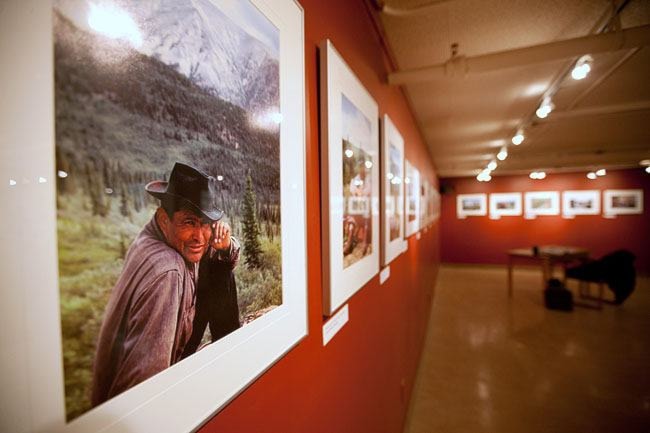In 1948, Elmer J. Harp and two other archeologists loaded up a wood-panelled Studebaker and left North Dakota bound for the Alaska Highway and the Yukon. They were looking for signs of early human life in a little-known territory on the edge of civilization, but the lives they encountered in Burwash Landing were perhaps the most interesting discovery of the journey.
Now the images and field notes Harp made while working in the North are on display at Arts Underground. The archeologists of the Andover-Harvard Yukon Expedition were some of the first civilians to drive the newly-opened Alaska Highway, and the body of work Harp created during that summer paints a picture of Yukon life in a quieter, simpler time.
Just getting to Burwash was itself an adventure for Harp and his comrades. As he wrote in his field notes, the crew encountered many hardships on the road to the North. They got stuck on horribly muddy roads near Fort St. John and at one point nearly gave up.
They got bogged down in seemingly endless mud. After pushing and heaving in vain to move their vehicle, Harp wrote of a welcome surprise; another Studebaker plowing valiantly towards them in the other direction.
“We said, ‘if they can do it, so could we,” Harp wrote.
They redoubled their efforts, finally freed the car, and continued rolling North.
Despite being a man of science, Harp wrote with poetic skill, expressing his wonder at the North’s austere beauty. Kathleen Lake especially takes up significant space in his pages.
“He was an example to archeologists in how to take field notes,” said Ruth Gotthardt, a Yukon government archeologist who helped curate the exhibition.
“His field notes are very good because he was interested in more than just the archeology. He was asking questions all the time. They ended up with all sorts of little sketches and became very entertaining. They paint quite the picture of life in Burwash in those days,” Gotthardt said.
Harp donated his materials to the Yukon Archives. They had at first been interested only in his notes, but it was his photos that really amazed her, she said.
The images are more than a half-century old, but the colours captured in the Kodachrome slides look like they were taken yesterday, Gotthardt said.
“The colour was just so true. We couldn’t believe these images, the quality of them, so that was quite a thrill for us. As archeologists we were first interested in his field notes, but when I saw the photos I thought, ‘Wow, we should make an exhibit,’” she said.
The photos show both the Yukon backcountry and life in the community with a quiet subtly. It’s clear from the images that Harp held a great respect for his subjects, many of them well-known Burwash citizens like Chief Albert Isaac and Copper Lilly.
Harp passed away a number of years ago, Gotthardt said, but he did live long enough to see his Yukon work published in a book with his notes and photos.
The Andover-Harvard Yukon Expedition show is presented in partnership with the McBride Museum and the Yukon Archives. It runs at Arts Underground until the end of April.
Contact Jesse Winter at
jessew@yukon-news.com
